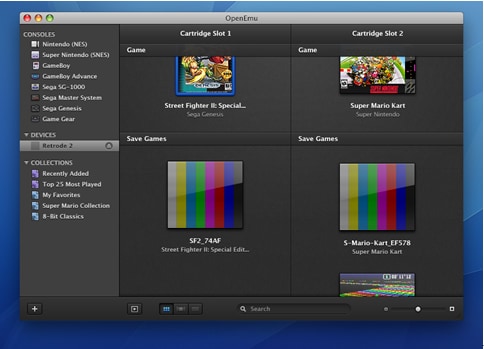

- #Run war and order in an emulator on mac how to
- #Run war and order in an emulator on mac code
- #Run war and order in an emulator on mac mac
Over the course of the following years I spent much time converting various systems in MAME into C++ classes, starting with the most naturally fitting cases.Įventually many systems in MAME became devices, and in doing so we got rid of most of the In order to make C++ work, I had to create aĭelegates had existed before, but due to MAME’s architecture, our delegates needed the ability to reference an object by name and bind to them later, and so I had to craft my own classes to do so. Multiple inheritance to identify themselves as CPUs or sound generators,Īnd this allowed for a more logical method of composing systems.
#Run war and order in an emulator on mac code
The first step in the process was to create the concept of a deviceĬlass, which contained all the code necessary to implement, say, a CPU or a The move to C++ was essentially my doing, though recent releases have taken it way beyond my personal comfort level Windows machine as my main system in 2000, I applied my porting experience and created an officialĪt the time, the main version of MAME was developed for DOS, but once the Windows version was stable it quickly became the official target. UI, optimizing for new systems, and keeping up with architectural changes in the
#Run war and order in an emulator on mac mac
I even got to talk to one of the original designers about it.Īlongside all of this work emulating systems, I also spent a lot of time working on MacMAME, which was the official Mac version of MAME. It only ever ended up powering a single prototype game calledīeat Head, but investigating this piece of history was fun. RISC processor that Atari engineers had designed. One of the neatest things I got to work on was an emulator for the custom Atari ASAP CPU. With the help of Frank Palazzolo, we managed to reverse engineer the chip’s behavior and bring these games to a working state in MAME. The dreaded slapstic chip, used for copy protection during Atari’s early 16-bit eraĪnother big early challenge was the Atari “slapstic” chip, aĬopy protection device that scrambled memory on most I had a relatively active blog with lots of good bits & pieces of info.I kept fairly detailed logs until 2007, listing all my work.a good summary of my MAME contributions.some of my early efforts were written up in arcticles called “MAME Memories” in 2001.

Most of my MAME work was done in the bright spotlight, and so there is a lot of documentation and information about what I worked on:
#Run war and order in an emulator on mac how to
July 1997 was when I first started working on MAMEĪlmost as soon I had found out about MAME, I joined the team and began learning how to emulate the arcade games of my youth.Īs the project grew, I began to see patterns emerge that compelled me to step up and reinvent the architecture of the system to exploit them.Įventually, I got the chance to lead the project and start a move from C to C++.Īnd then, after 15 years of intense work, I had to set it aside after the birth of my son.Īlong the way, I did also explore some other arcade emulation approaches, meet a lot of cool people at gatherings, and even give some talks.


 0 kommentar(er)
0 kommentar(er)
